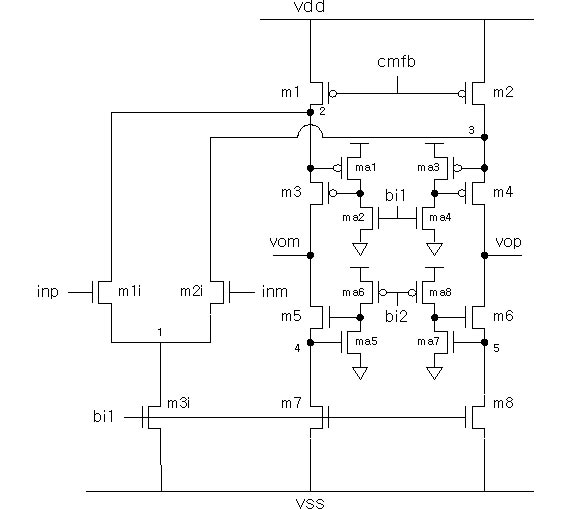yonzzan
Junior Member level 3
0.18 micron technology vdsat

I am trying to decide effective voltages for each transistors in the figure.
In normal folded cascode, its output swing is derived by Vout=2( vdd-(vov1+vov3+vov5+vov7)).. which I am actualy unsure.
wil there be any change in the output swing calculation if I add gain-boosting part to folded cascode opamp?
Thanks ahead!!
Added after 1 minutes:
I have to meet this spec below.
Technology: TSMC 0.18 micron technology
DC gain:60dB
Gain bandwidth product:500MHz
phase margin 60
output swing 1vp-p
output load 2pF
slew rate 20V/usec
Fully differential op amp
Do you think that the topollogy above is the best choice?
Added after 2 minutes:
Also, how can I decide each Vb1, Vb2, Vcm..
Thanks

I am trying to decide effective voltages for each transistors in the figure.
In normal folded cascode, its output swing is derived by Vout=2( vdd-(vov1+vov3+vov5+vov7)).. which I am actualy unsure.
wil there be any change in the output swing calculation if I add gain-boosting part to folded cascode opamp?
Thanks ahead!!
Added after 1 minutes:
I have to meet this spec below.
Technology: TSMC 0.18 micron technology
DC gain:60dB
Gain bandwidth product:500MHz
phase margin 60
output swing 1vp-p
output load 2pF
slew rate 20V/usec
Fully differential op amp
Do you think that the topollogy above is the best choice?
Added after 2 minutes:
Also, how can I decide each Vb1, Vb2, Vcm..
Thanks